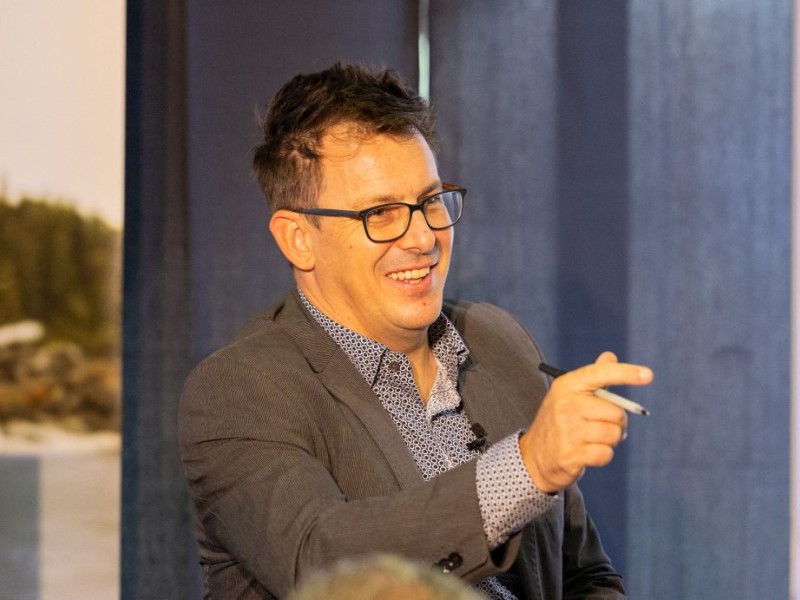The tasty concept of paddock to plate has gained popularity in recent years – with people attracted to the idea of fewer middlemen, simplified supply chains, and faster and fresher food.
It’s a concept that we’d do well to keep in our mind as Australia looks to transform its economy from one that simply digs things out of the ground for export markets, to one that uses those inputs to create the science-based jobs, products, services, and society of the future.
The recent federal Budget presented a tantalising pathway in this process. It gave a glimpse of an exciting future with its aspiration for a Future Made in Australia.

It’s a plan that has the potential to turbocharge Australia’s innovation and manufacturing in renewable hydrogen, critical minerals, green metals and new battery and solar panel technologies.
The government then followed this up with a National Robotics Strategy, which aims to develop Australia’s robotics ecosystem, leading to a more unified and larger robotics industry.
These build on the $15 billion National Reconstruction Fund and the Medical Science Co-Investment Plan. They are all important steps towards the future “powered by science” called for by Prime Minister Anthony Albanese.
But while these steps show us a pathway out of the paddock, they don’t yet get things to the plate.
These new industry investments will require a pipeline of skilled people and underpinning research and innovation.
To deliver on this aspiration and be globally competitive the country needs to significantly raise its game in investment in research and development.
It is this investment that will drive us along the pathway and ensure that great Australian research becomes great Australian innovation which becomes world-leading Australian products and services.
It’ll serve up the future fresh on our plates.
The economic impact of R&D investment is indisputable. Very early-stage research funded by the Australian Research Council returns $3.32 for every dollar invested.
Further along that innovation pipeline, research supported by the Cooperative Research Centres program has returned $5.61 for every dollar invested.
But right now, Australia spends less than two cents in every dollar on economy-boosting R&D. The USA spends more than double that, and South Korea almost triple.
We are far behind our international economic rivals, and laggards even against the OECD average of 2.7 per cent.
If we were investing 3, rather than 1.68, per cent of GDP in R&D right now, the economy would be $100 billion and 42,000 jobs better off And that’s a conservative estimate.
But the benefits to boosting R&D aren’t just financial. Increasing that investment will create the industries, jobs, and futures we want for our children and society.
I grew up steeped in science. One of my earliest memories was being amazed at the equipment in the medical lab where my father worked. He was a pathologist at Fremantle Hospital in Western Australia. I’d visit after kindergarten and was fascinated by the insights, discovery and new knowledge that could be found through a microscope.
Our kids know that ideas, new technology and innovations are being created at a pace never seen before, and they know that change is driven by science, technology, engineering and mathematics.
As parents we know that STEM skills and knowledge are core to the future we want for our children: one with an abundance of skilled and well-paid jobs, one where they have opportunity to innovate, and one where Australia is a creator, not just a consumer, of
new technology.
New government funding is essential to that future, and to getting closer to the OECD R&D average. We look forward to seeing the detail on how Future Made in Australia, the Robotics Strategy and the National Battery Strategy will boost research in areas of government priority and Australian competitive advantage.
But government funding alone will not get us to that 3 per cent target.
To get there, we need all the parts of our innovation ecosystem to be singing the same tune. That means government must continue to deepen its own investment in R&D and provide the right incentives to encourage others, including – crucially – the business sector, which needs to significantly raise its game and show willingness for sustained and bold backing for research.
Get this right and we can use our world-class research in real world applications while building the society, industry and jobs we want for the future. We can create an economy where Australia’s role doesn’t stop at the paddock gate.
Ryan Winn is the chief executive officer of Science & Technology Australia
Do you know more? Contact James Riley via Email.
